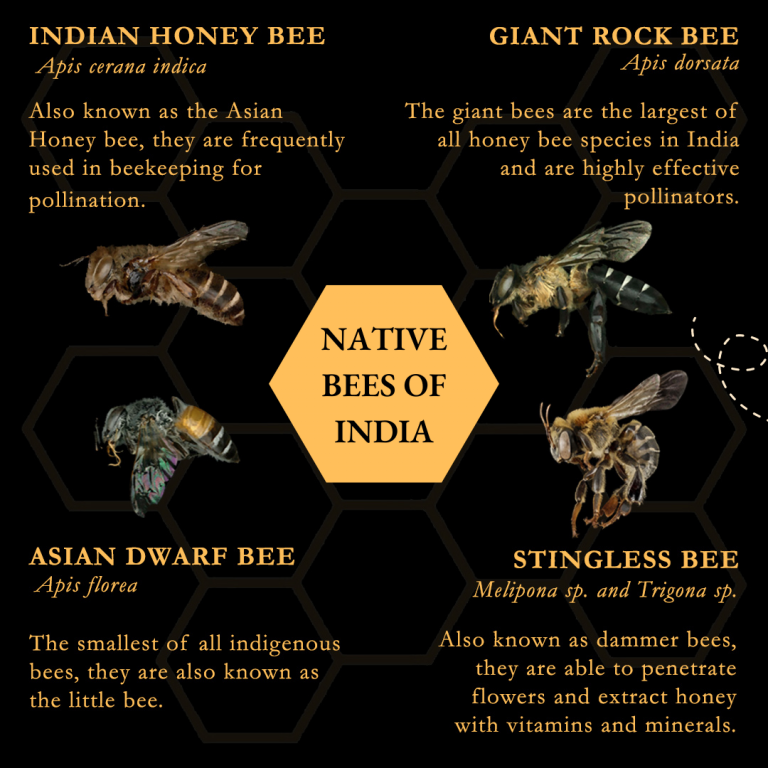Rapid Fire
Stingless Bees
- 14 Jun 2025
- 2 min read
Researchers in Nagaland found native stingless bees Tetragonula iridipennis and Lepidotrigona arcifera to be safe, effective pollinators that boost crop yields and produce medicinal honey, ideal for Northeast India and safer than traditional honeybees.
- Stingless Bee: They are small, eusocial insects belonging to the tribe Meliponini within the family Apidae, commonly found in tropical and subtropical regions.
- Key Characteristics:
- Identification Features: Stingless bees are small, black or dark-bodied with yellow markings.
- They have 2 pairs of wings, short antennae, large oval eyes, and an oval face with a pointed chin.
- Habitat and Nesting: They nest in tree trunks, termite mounds, wall cavities, or wooden boxes.
- Nests are made of resin, mud, and wax, containing honey pots and brood cells arranged spirally or randomly.
- Diet: Their diet includes nectar and pollen. Pollen is used to make protein balls for larval growth. Some species also feed on rotting fruits or carrion.
- Reproduction and Lifecycle: The queen mates once. Fertilized eggs develop into workers or queens (depending on nutrition), while unfertilized eggs become drones. Larvae pupate in sealed wax cells.
- Defense Mechanism: They lack functional stingers but bite with mandibles. Some, like Trigona, inject venom through bites.
- Pollination Role: Stingless bees are buzz pollinators, vital for pollinating tropical plants and crops, contributing significantly to ecosystem health and agriculture.
- Identification Features: Stingless bees are small, black or dark-bodied with yellow markings.
| Read More: Threats to Wild Bees, KVIC’s Honey Mission |







